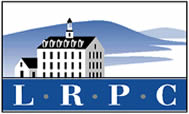LAND USE PLANNING
Land use, transportation, natural resources, and community networks are strongly linked, and this relationship is paramount to all local, regional and statewide planning and program decisions. Changing land use patterns directly impact community services and facilities, such as water and sewer, police, fire and emergency services, recreation, and building inspection. As a result, the LRPC works directly with our member communities in the development of land use studies, specific area plans, build out analyses, and other local and regional land use planning initiatives.
Regional Plan
- Go to Regional Planning section.
Master Plans
-
 The master plan is both a reference and policy document. It contains appropriate maps, charts and supporting text, which present the recommendations of the planning board, and offers guidelines for community decision makers. The plan should be the most complete source of information about current conditions and trends within the municipality. The process used to prepare a master plan generally consists of five steps: visioning, data collection, data analysis, writing the plan, and adoption and implementation. RSA 674:2
The master plan is both a reference and policy document. It contains appropriate maps, charts and supporting text, which present the recommendations of the planning board, and offers guidelines for community decision makers. The plan should be the most complete source of information about current conditions and trends within the municipality. The process used to prepare a master plan generally consists of five steps: visioning, data collection, data analysis, writing the plan, and adoption and implementation. RSA 674:2
-
The LRPC has assisted in the development of many Master Plans. Recent efforts have included working in the towns of Ashland, Bristol, and Center Harbor to assist with community surveys, meeting facilitation, and plan development. Assistance provided in other communities include: Alexandria, Alton, Andover, Barnstead, Freedom, Hill, Holderness, Moultonborough, New Hampton, Northfield, and Sandwich.
Capital Improvement Programs (CIP)
- A CIP is the financial equivalent of a community master plan. The CIP serves as a decision making tool used to plan and schedule town improvements over at least a six-year period. It bridges the gap between planning efforts and the fiscal realities of providing municipal services. Under RSA 674:5, the sole purpose of a CIP is to "aid the mayor or selectmen and the budget committee in their consideration of the annual budget." The CIP provides a suggested timeline for budgeting and implementing needed capital improvements. As an advisory document, the CIP is designed to guide the overall direction of the capital portion of the municipal budget rather than serve as a rigid requirement for annual capital expenditures. RSA: 674-5
- LRPC has assisted in the development of CIPs for Belmont, Hill, Meredith, Northfield, Tilton.
Zoning Ordinances
 Zoning is a process of regulating use of land, buildings and structures that may be permitted in a community by establishing legal regulations based on the recommendations in the master plan. Zoning should be looked at as a positive tool for encouraging certain development, preserving existing characteristics, and facilitating growth in a manner consistent with the traditional character of the community. In this way, zoning is a method of implementing the Master Plan. It is based on the plan and helps to put the plan into effect. Therefore, a zoning ordinance is a land use planning tool used to assist in directing the future development and preservation of community. RSA 674:16
Zoning is a process of regulating use of land, buildings and structures that may be permitted in a community by establishing legal regulations based on the recommendations in the master plan. Zoning should be looked at as a positive tool for encouraging certain development, preserving existing characteristics, and facilitating growth in a manner consistent with the traditional character of the community. In this way, zoning is a method of implementing the Master Plan. It is based on the plan and helps to put the plan into effect. Therefore, a zoning ordinance is a land use planning tool used to assist in directing the future development and preservation of community. RSA 674:16
Subdivision Regulation
- The broad purpose of subdivision control is to guide municipal development, to protect the prospective residents and neighboring owners from problems associated with poorly designed areas, and to advance the recognized purposes of the police power. RSA:674:35
Site Plan Review
- A site plan is a plan which may be required to be submitted to the planning board prior to development of a particular tract of land. The plan must show the proposed location of the buildings, parking areas, landscaping, drainage and other installations on the plot, and their relationship to existing conditions such as roads, neighboring land uses, natural features, public facilities, ingress and egress roads, interior roads, and similar features.
- Site plan review is one of the most useful techniques in modern land use control. It is an extremely important device to insure that uses which are permitted by the zoning ordinance are constructed on a site in such a way that they fit into the area in which they are being constructed without causing drainage, traffic, or lighting problems. RSA:674:43
Development of Regional Impact (DRI)
A development of regional impact is created when there is a proposal before a local planning, land use, zoning, or historic board which “could reasonably be expected to impact on a neighboring municipality” as outlined in N.H. RSA 36:54 through RSA 36:58. For further reference, see LRPC’s Regional Impact Guidelines, approved by the Commission on September 24, 2018 and still in effect today.
Housing Needs Assessment
Publications/Resources
- NH Municipal Association Webinar "The Workings of a Planning Board" (07/20/23)
- NH OPD PLAN Webinar "Navigating the Planning and Zoning Board Handbooks: What's New in the 2022 Editions?" (02/16/23)
- Handbooks
- Housing and Conservation Planning Program (2007)
